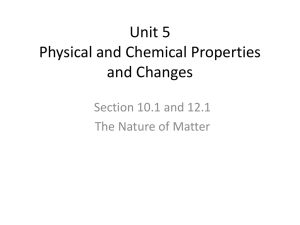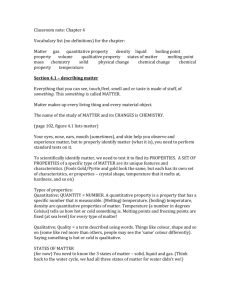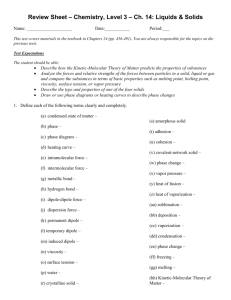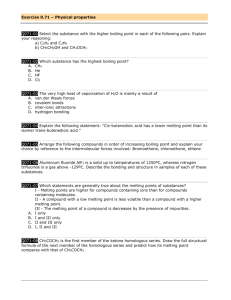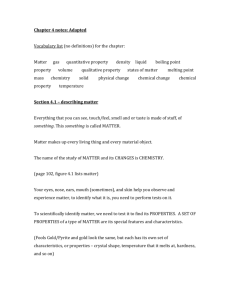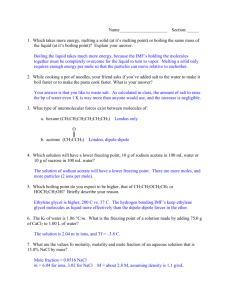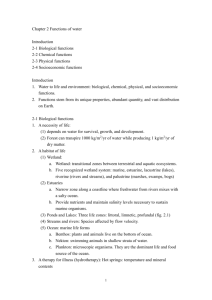Introduction to Physical Properties
advertisement
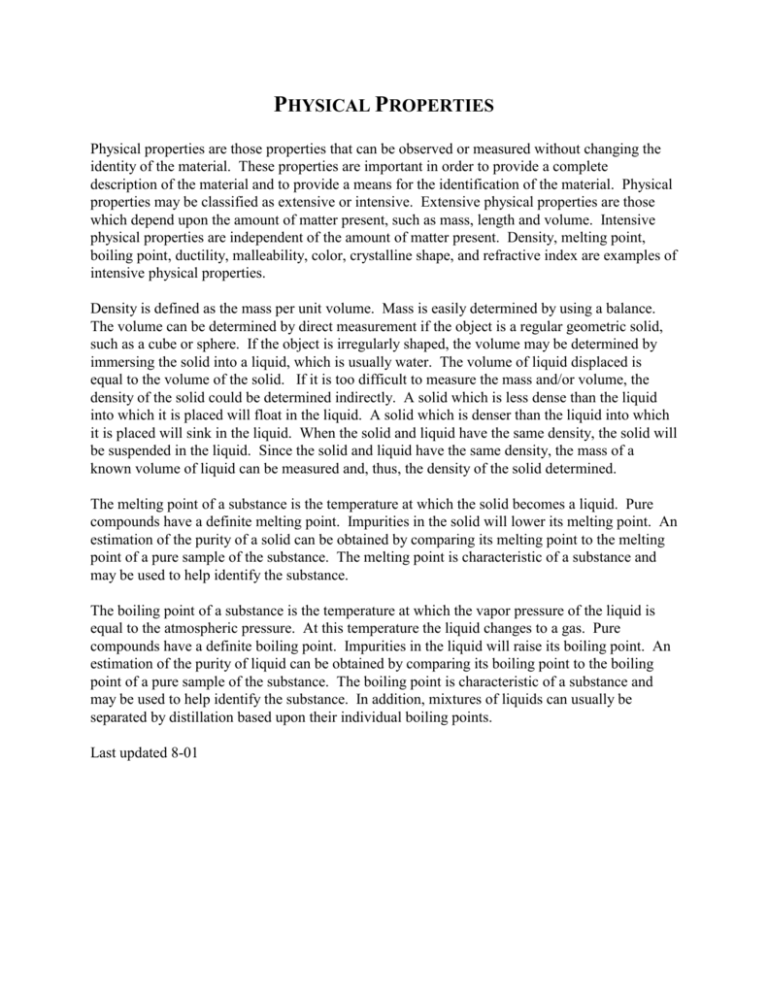
PHYSICAL PROPERTIES Physical properties are those properties that can be observed or measured without changing the identity of the material. These properties are important in order to provide a complete description of the material and to provide a means for the identification of the material. Physical properties may be classified as extensive or intensive. Extensive physical properties are those which depend upon the amount of matter present, such as mass, length and volume. Intensive physical properties are independent of the amount of matter present. Density, melting point, boiling point, ductility, malleability, color, crystalline shape, and refractive index are examples of intensive physical properties. Density is defined as the mass per unit volume. Mass is easily determined by using a balance. The volume can be determined by direct measurement if the object is a regular geometric solid, such as a cube or sphere. If the object is irregularly shaped, the volume may be determined by immersing the solid into a liquid, which is usually water. The volume of liquid displaced is equal to the volume of the solid. If it is too difficult to measure the mass and/or volume, the density of the solid could be determined indirectly. A solid which is less dense than the liquid into which it is placed will float in the liquid. A solid which is denser than the liquid into which it is placed will sink in the liquid. When the solid and liquid have the same density, the solid will be suspended in the liquid. Since the solid and liquid have the same density, the mass of a known volume of liquid can be measured and, thus, the density of the solid determined. The melting point of a substance is the temperature at which the solid becomes a liquid. Pure compounds have a definite melting point. Impurities in the solid will lower its melting point. An estimation of the purity of a solid can be obtained by comparing its melting point to the melting point of a pure sample of the substance. The melting point is characteristic of a substance and may be used to help identify the substance. The boiling point of a substance is the temperature at which the vapor pressure of the liquid is equal to the atmospheric pressure. At this temperature the liquid changes to a gas. Pure compounds have a definite boiling point. Impurities in the liquid will raise its boiling point. An estimation of the purity of liquid can be obtained by comparing its boiling point to the boiling point of a pure sample of the substance. The boiling point is characteristic of a substance and may be used to help identify the substance. In addition, mixtures of liquids can usually be separated by distillation based upon their individual boiling points. Last updated 8-01

